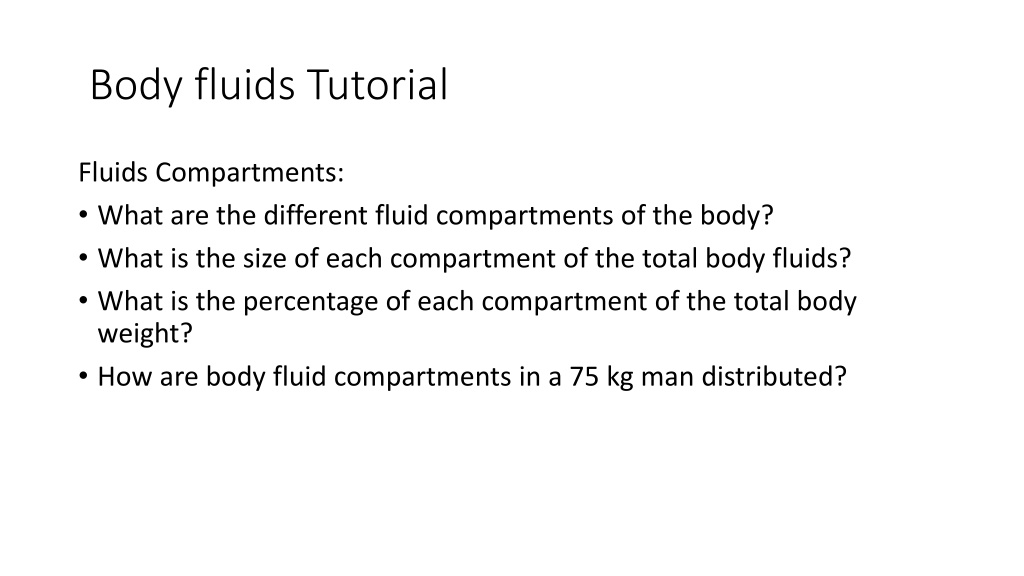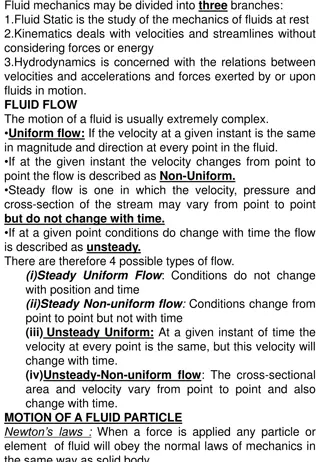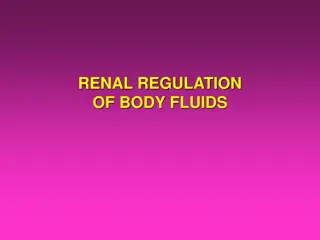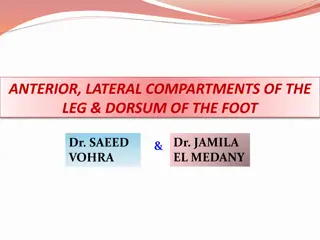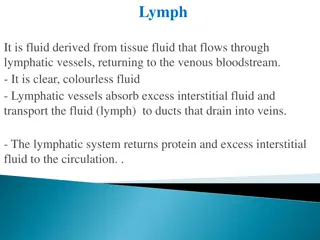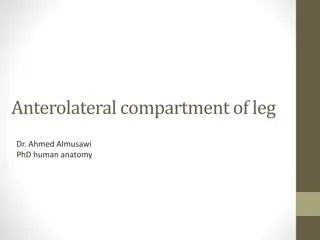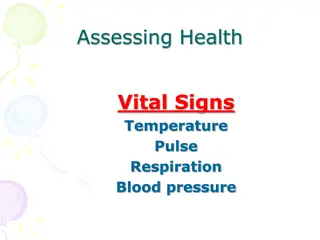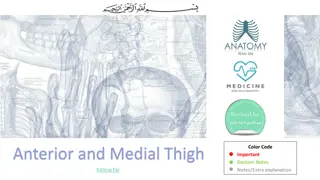Fluid Compartments and Body Fluid Regulation
Different fluid compartments of the body, their sizes, distribution, water intake and output sources, composition of body fluids, and the effects of various infusions on ECF, ICF, and cellular size. Learn about the factors regulated to maintain balance among body fluid compartments and understand the importance of ECF volume and osmolarity regulation.
Download Presentation

Please find below an Image/Link to download the presentation.
The content on the website is provided AS IS for your information and personal use only. It may not be sold, licensed, or shared on other websites without obtaining consent from the author.If you encounter any issues during the download, it is possible that the publisher has removed the file from their server.
You are allowed to download the files provided on this website for personal or commercial use, subject to the condition that they are used lawfully. All files are the property of their respective owners.
The content on the website is provided AS IS for your information and personal use only. It may not be sold, licensed, or shared on other websites without obtaining consent from the author.
E N D
Presentation Transcript
Body fluids Tutorial Fluids Compartments: What are the different fluid compartments of the body? What is the size of each compartment of the total body fluids? What is the percentage of each compartment of the total body weight? How are body fluid compartments in a 75 kg man distributed?
Fluid Compartments 60% of body weight 60% of body weight Intracellular fluid ( 2/3) 67% of TBW 40% of body wt Extracellular fluid ( 1/3) 33% of TBW 20% of body wt Plasma 25% of ECF 5% of body wt Interstitial fluid 75% of ECF 15% of body wt Transcellular fluid CSF Intraocular Pleural Peritoneal Pericardial Synovial Digestive secretions
Water intake and output: What are the sources of water for the body? How does the body lose water? Does the water intake match the water output in a normal person?
Composition of body fluids: What is the major cation in ECF? What is the major cation in ICF? What are the major anions in ECF? What are the major anions in ICF? Why is there a difference in the composition of ECF and ICF? What is the difference between plasma and ECF? Why is there a difference between plasma and ECF?
What will happen to ECF, ICF and the human cell size if: We infuse distilled water into his veins? We infuse 0.9% saline into his veins? We infuse 1.8% saline into his veins? We infuse isotonic 5% dextrose (a type of sugar that can penetrate the cell membrane) into his veins?
What factors of body fluids are regulated to maintain balance among body fluids compartments? Why is regulation of ECF volume important? Why is regulation of ECF osmolarity important?
Factors affecting body fluids Factors affecting body fluids Water intake & output Age: - infant: 73% - elderly: 45% Gender: - adult male: 60% - adult female: 40-50% Obesity Climate Habits Level of physical activity
Dehydration What are the common causes of dehydration? What are the common clinical features of dehydration? How is dehydration classified?
Management of dehydration: What are the different methods used for rehydration? What are the substances used for rehydration?
